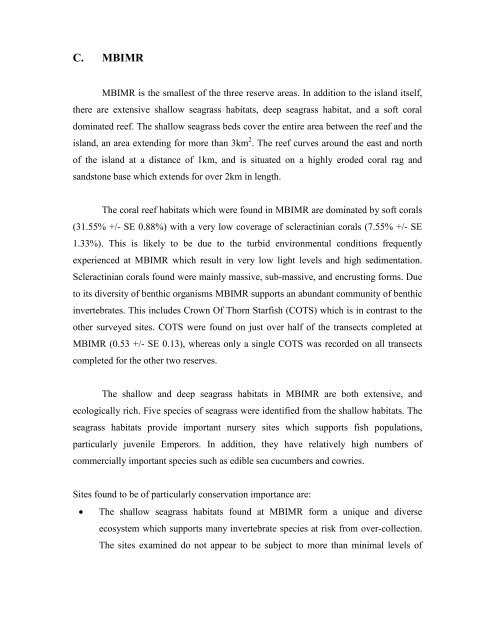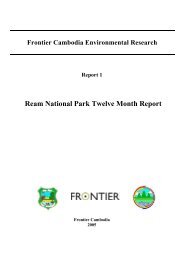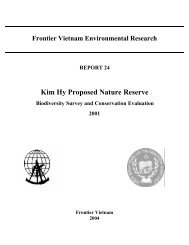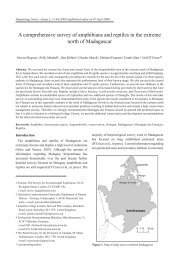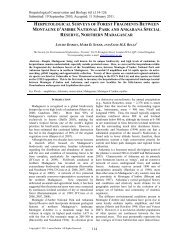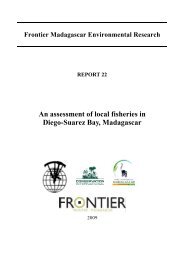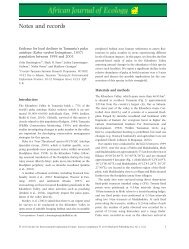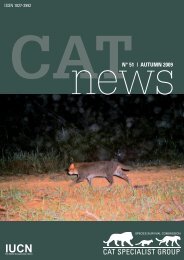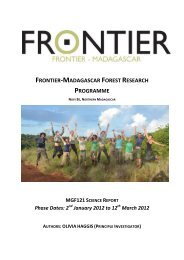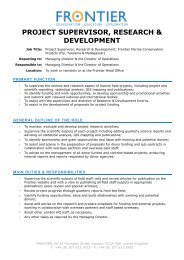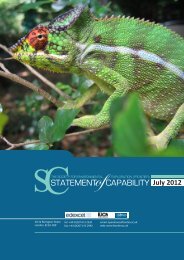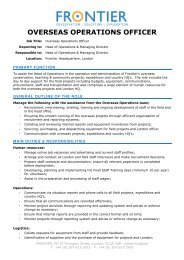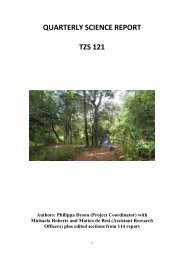Biophysical Survey of Mafia Island Marine Reserves
Biophysical Survey of Mafia Island Marine Reserves
Biophysical Survey of Mafia Island Marine Reserves
Create successful ePaper yourself
Turn your PDF publications into a flip-book with our unique Google optimized e-Paper software.
C. MBIMR<br />
MBIMR is the smallest <strong>of</strong> the three reserve areas. In addition to the island itself,<br />
there are extensive shallow seagrass habitats, deep seagrass habitat, and a s<strong>of</strong>t coral<br />
dominated reef. The shallow seagrass beds cover the entire area between the reef and the<br />
island, an area extending for more than 3km 2 . The reef curves around the east and north<br />
<strong>of</strong> the island at a distance <strong>of</strong> 1km, and is situated on a highly eroded coral rag and<br />
sandstone base which extends for over 2km in length.<br />
The coral reef habitats which were found in MBIMR are dominated by s<strong>of</strong>t corals<br />
(31.55% +/- SE 0.88%) with a very low coverage <strong>of</strong> scleractinian corals (7.55% +/- SE<br />
1.33%). This is likely to be due to the turbid environmental conditions frequently<br />
experienced at MBIMR which result in very low light levels and high sedimentation.<br />
Scleractinian corals found were mainly massive, sub-massive, and encrusting forms. Due<br />
to its diversity <strong>of</strong> benthic organisms MBIMR supports an abundant community <strong>of</strong> benthic<br />
invertebrates. This includes Crown Of Thorn Starfish (COTS) which is in contrast to the<br />
other surveyed sites. COTS were found on just over half <strong>of</strong> the transects completed at<br />
MBIMR (0.53 +/- SE 0.13), whereas only a single COTS was recorded on all transects<br />
completed for the other two reserves.<br />
The shallow and deep seagrass habitats in MBIMR are both extensive, and<br />
ecologically rich. Five species <strong>of</strong> seagrass were identified from the shallow habitats. The<br />
seagrass habitats provide important nursery sites which supports fish populations,<br />
particularly juvenile Emperors. In addition, they have relatively high numbers <strong>of</strong><br />
commercially important species such as edible sea cucumbers and cowries.<br />
Sites found to be <strong>of</strong> particularly conservation importance are:<br />
• The shallow seagrass habitats found at MBIMR form a unique and diverse<br />
ecosystem which supports many invertebrate species at risk from over-collection.<br />
The sites examined do not appear to be subject to more than minimal levels <strong>of</strong>


